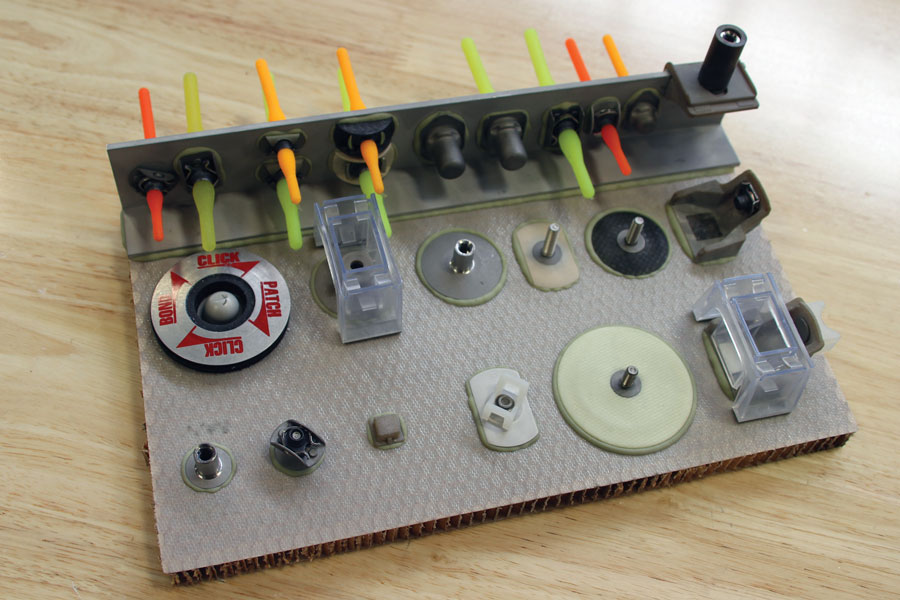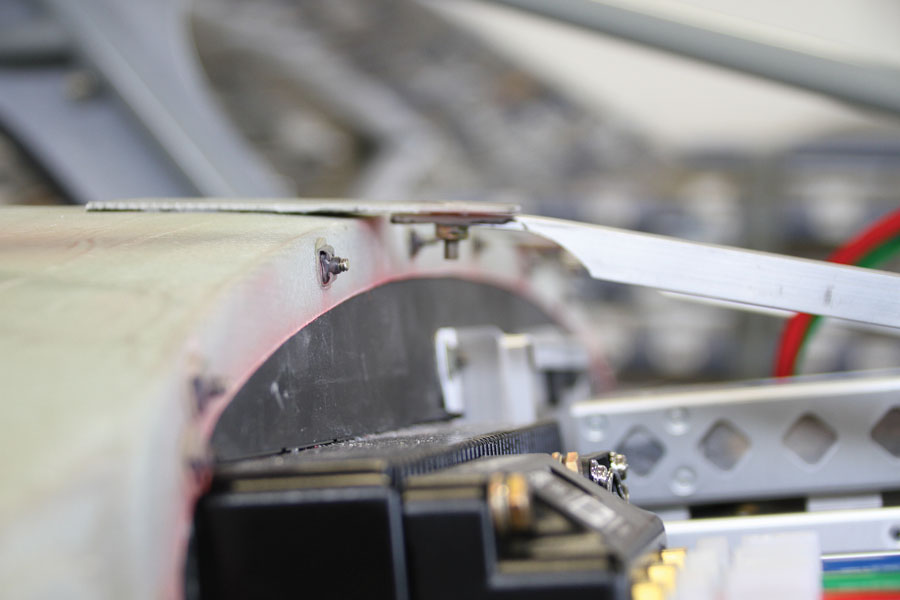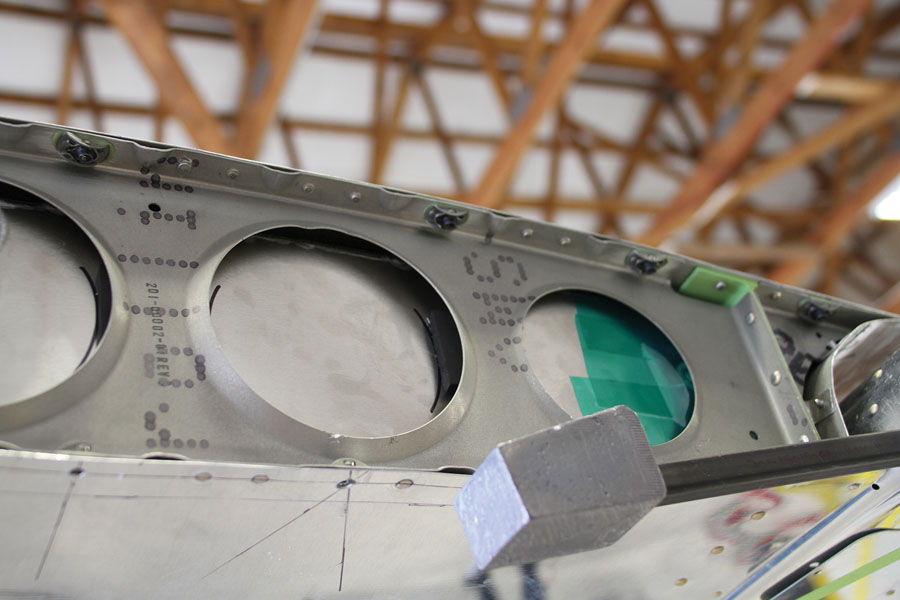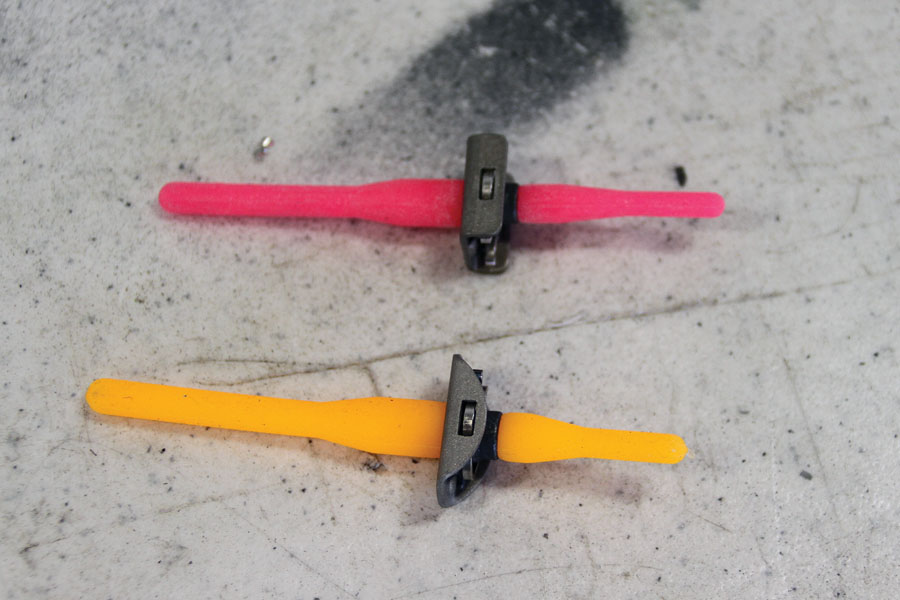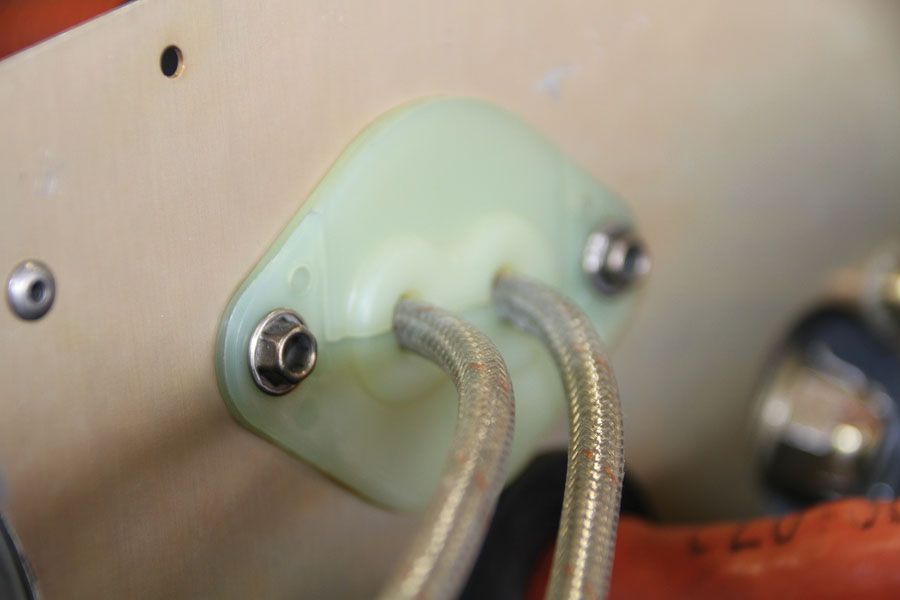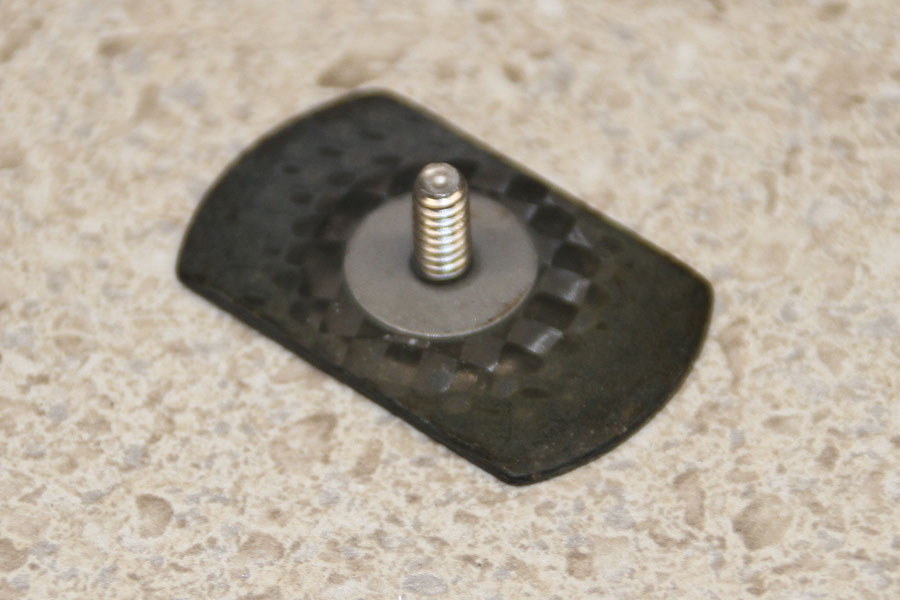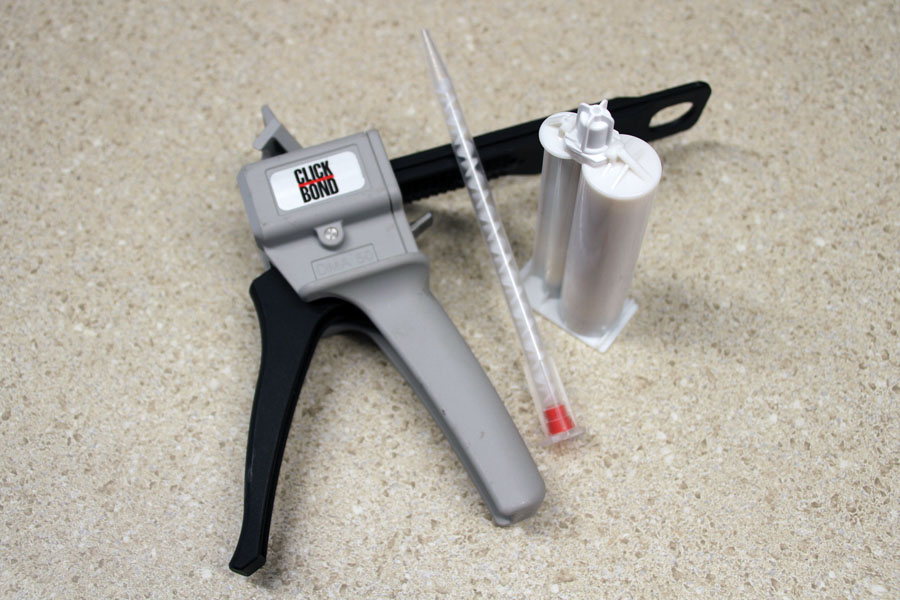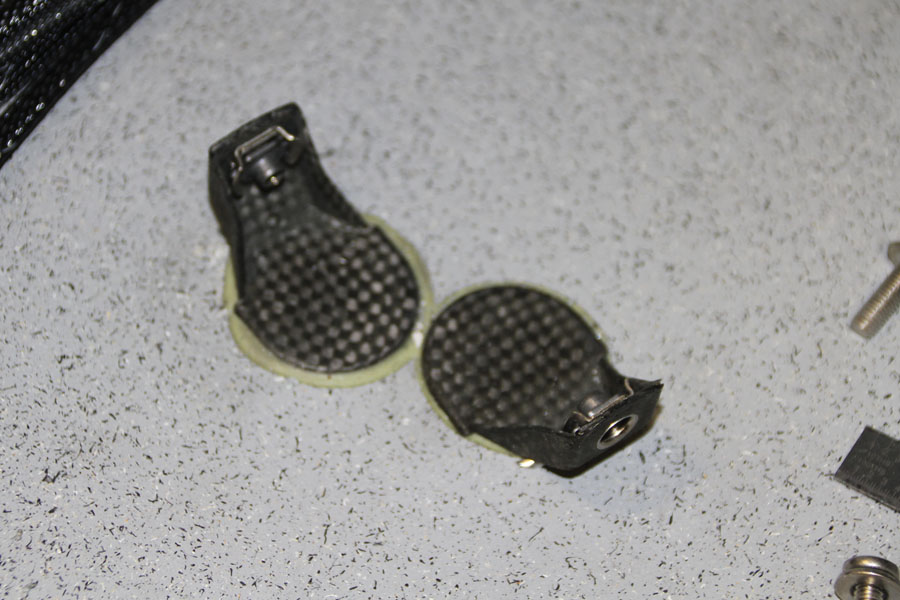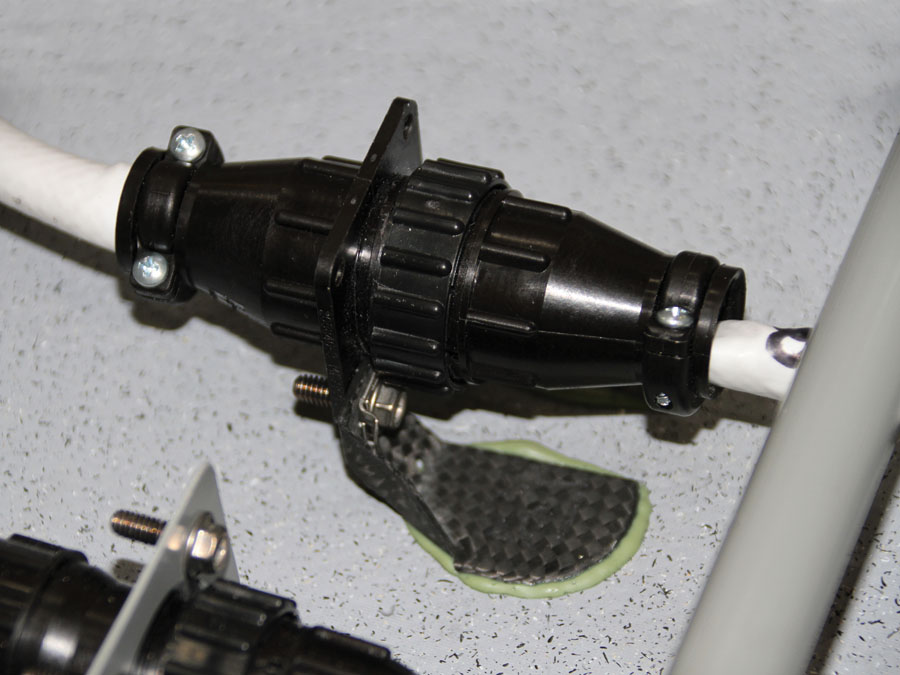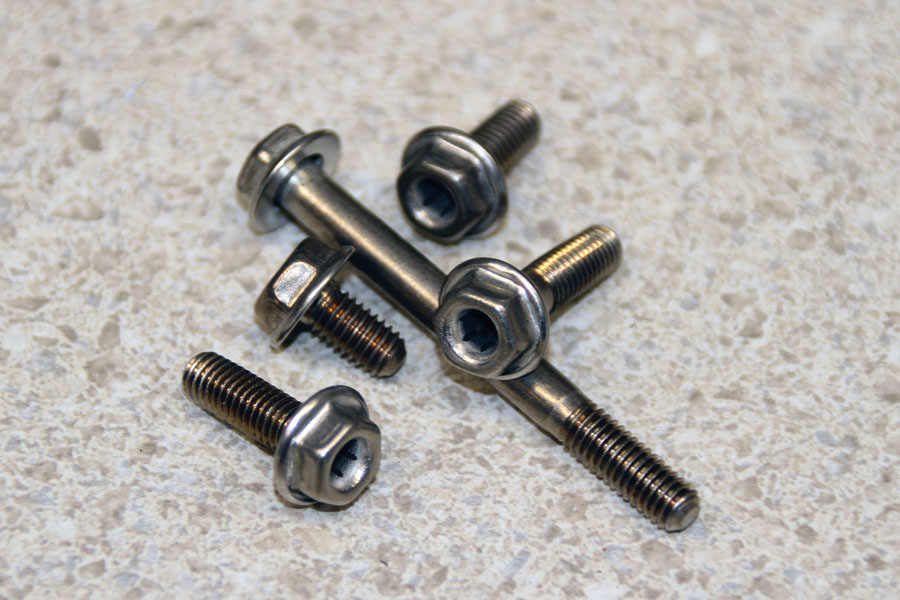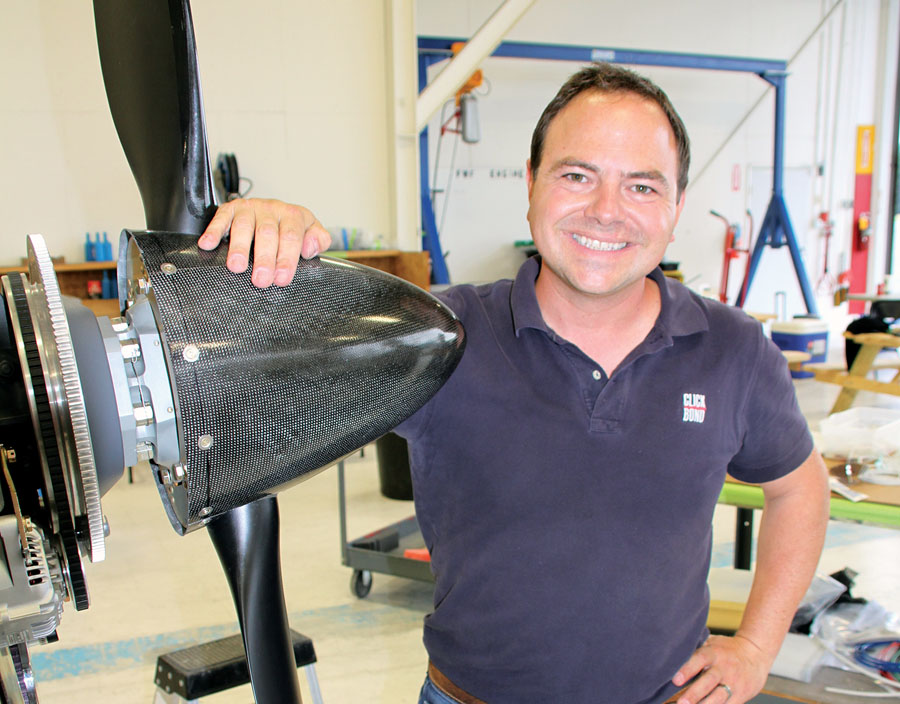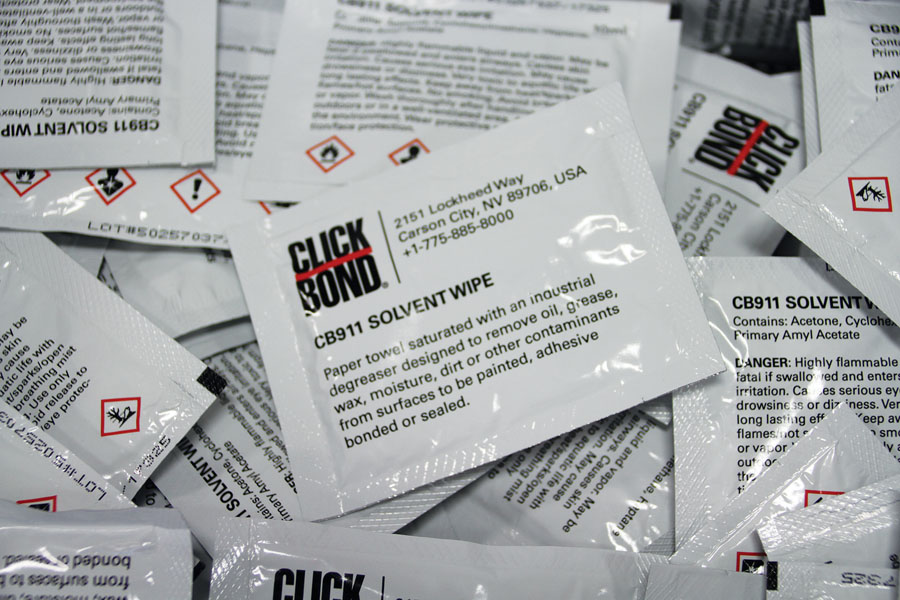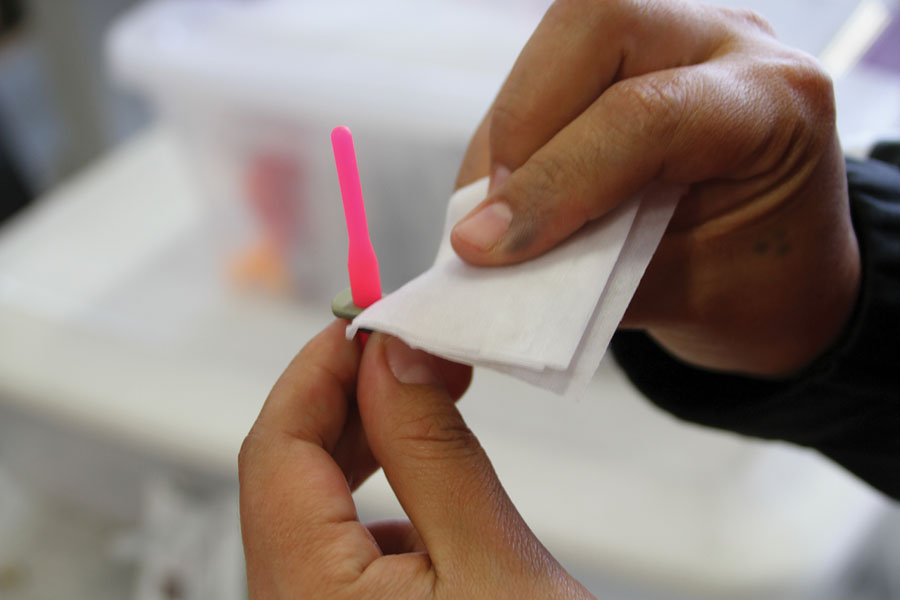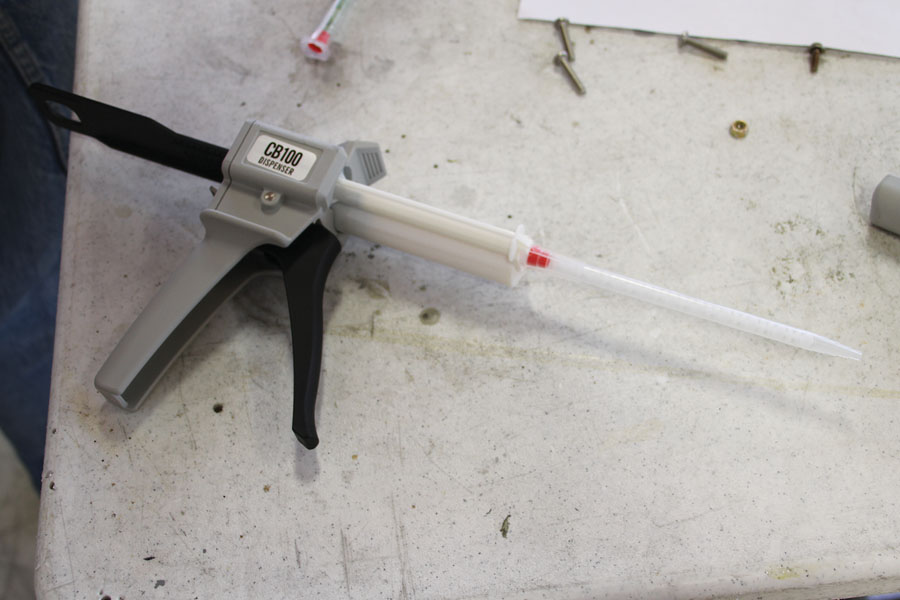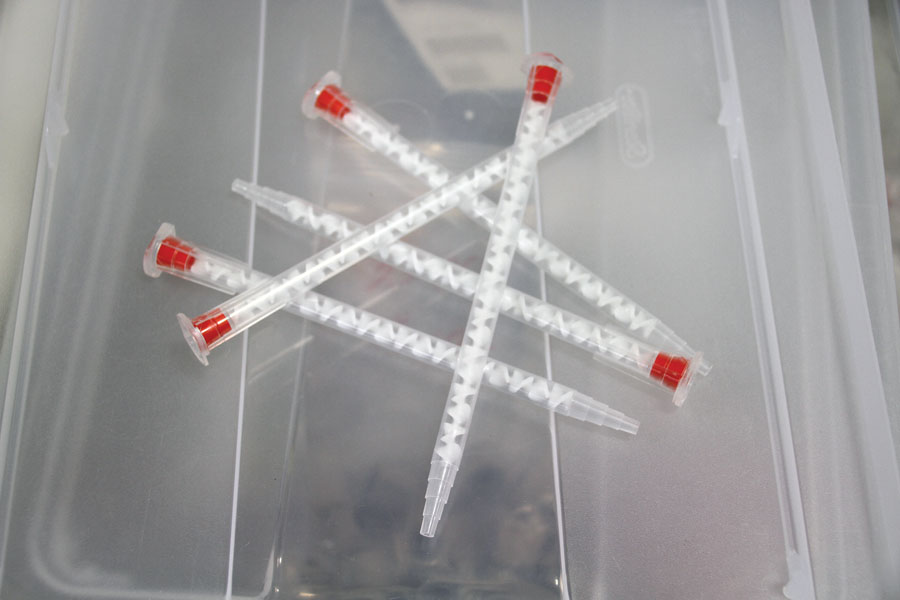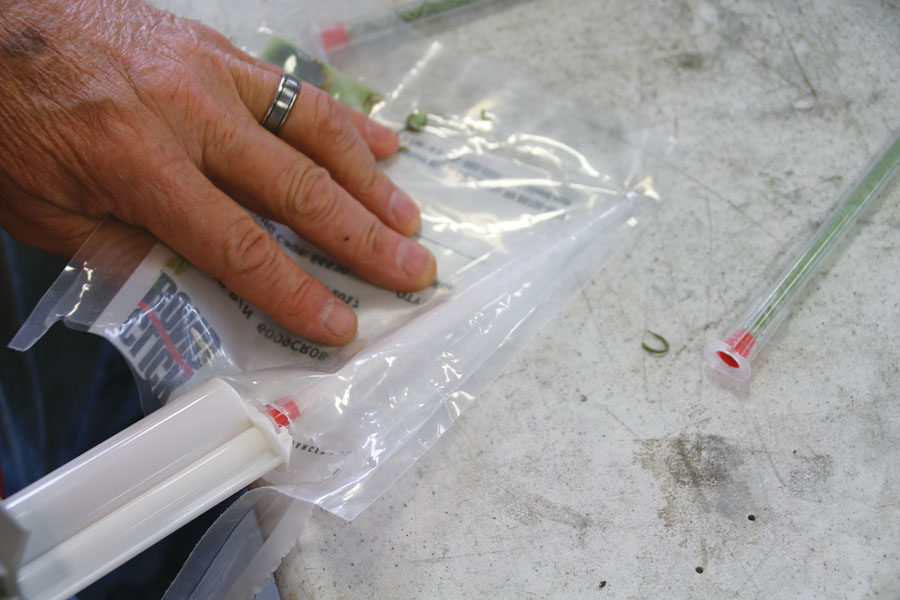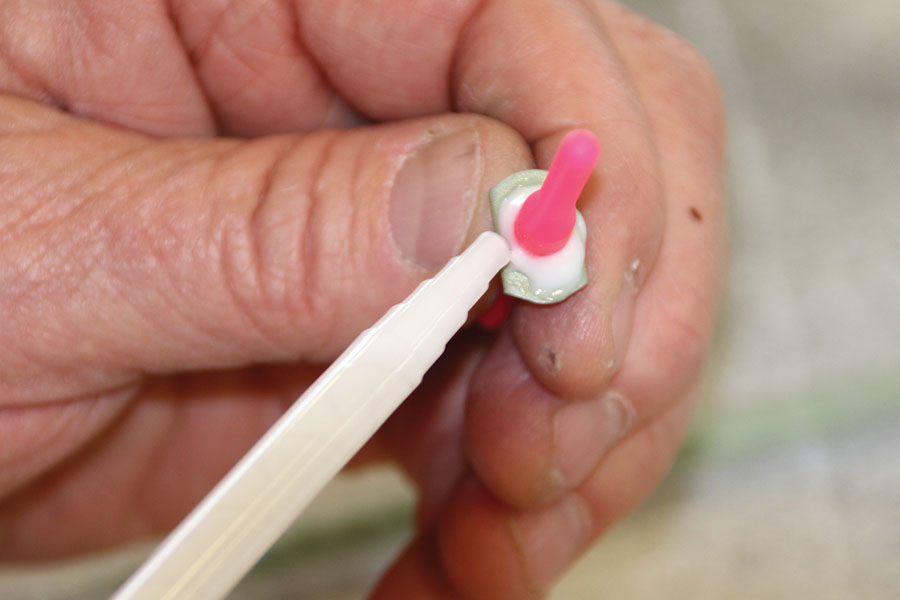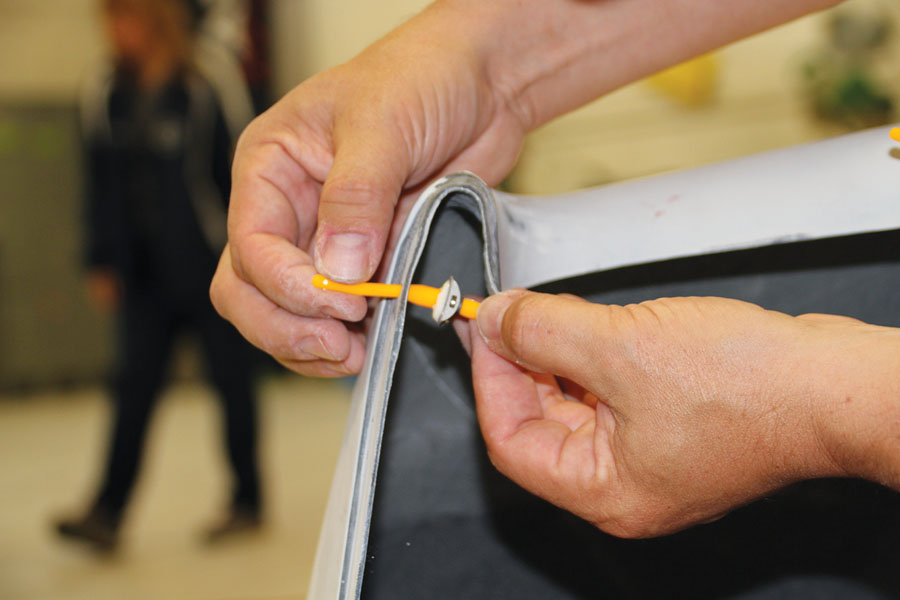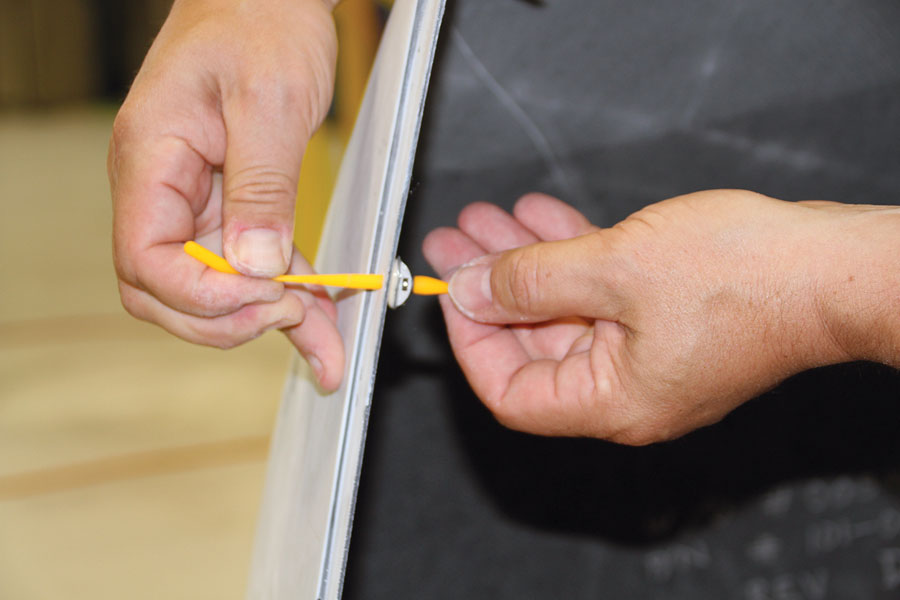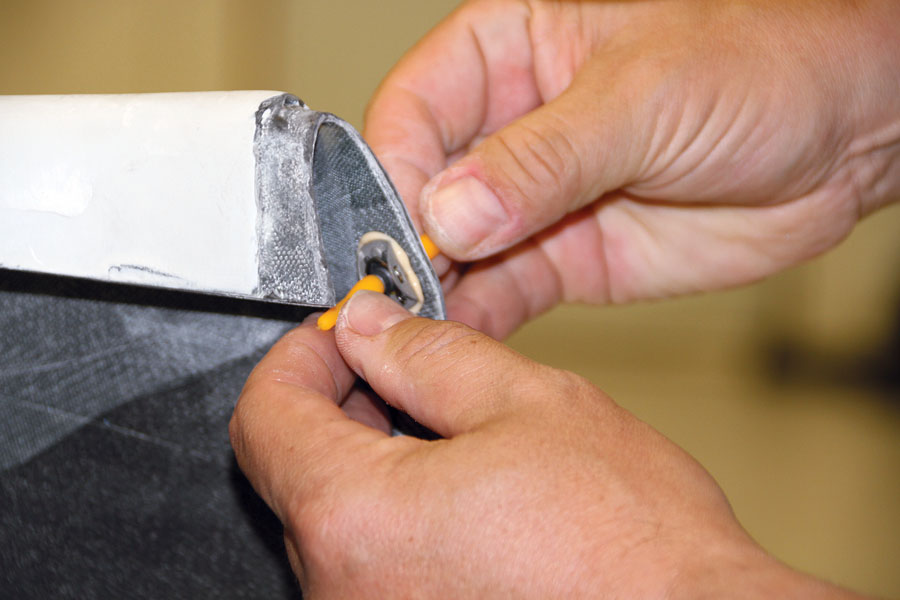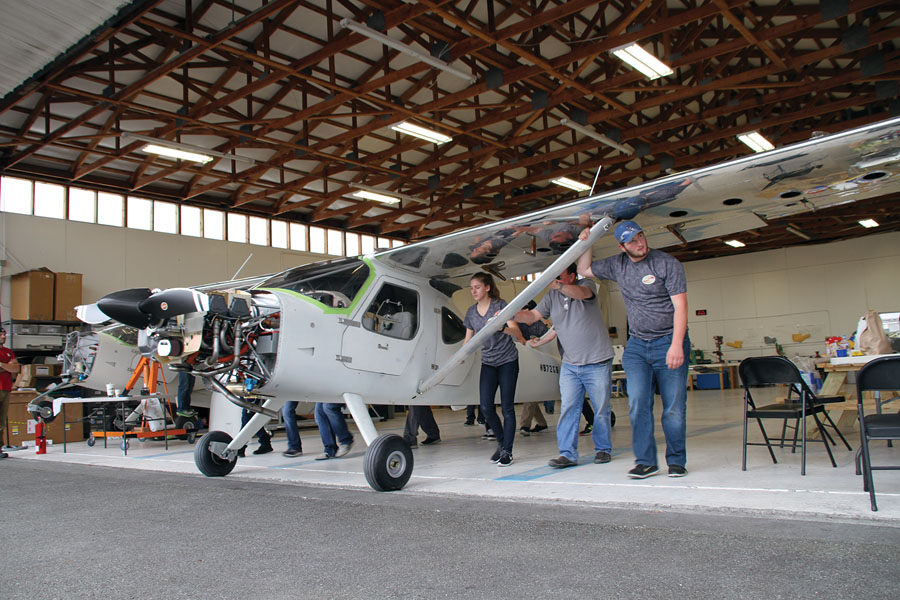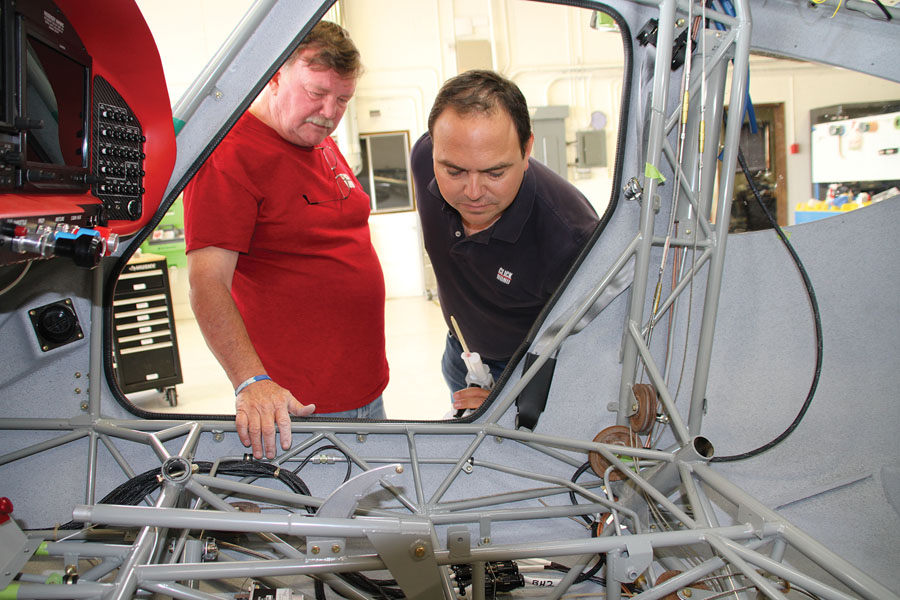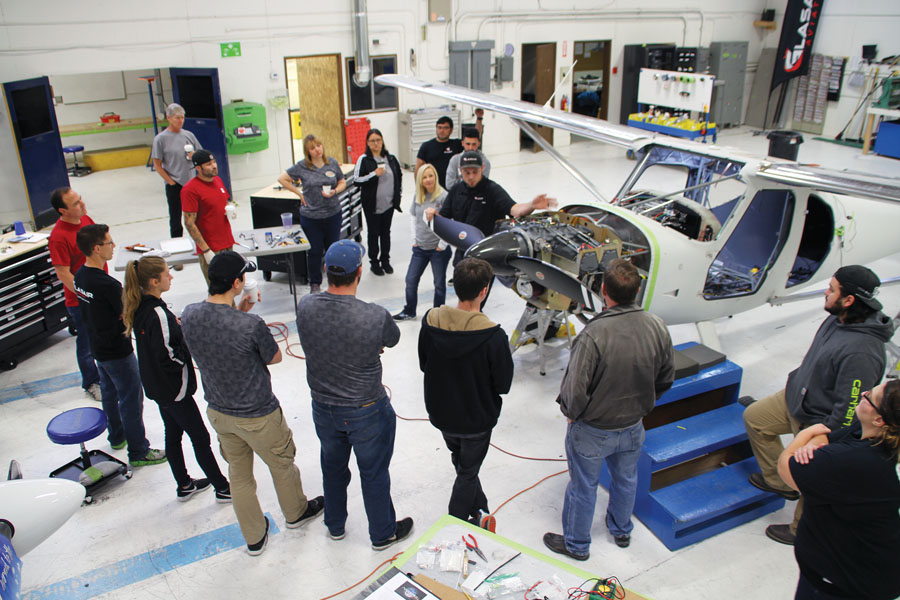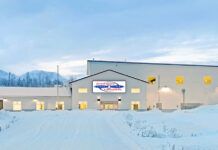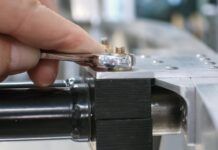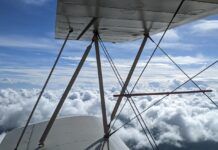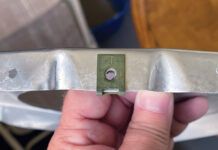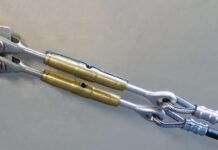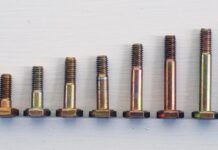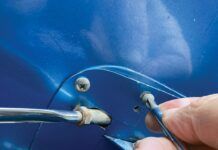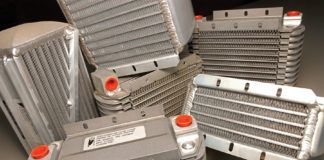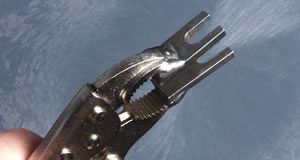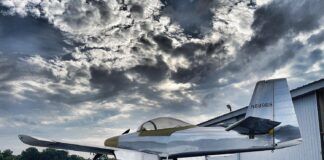A sample board shows many of the Click Bond products, including their very first, the Click Patch—used to fix holes in a pressure hull or fuel tank.
What do you do if you’re an established aerospace company that no one in a growing part of the industry knows about? You build an airplane using your components in order to show them off! That’s what Click Bond, Inc., headquartered in Carson City, Nevada, did this summer.
But they didn’t just buy an airplane kit and install their line of fasteners, stand-offs, and nut plates in it as they went. They did build an airplane—a Glasair Sportsman—and they used their products in every nook and cranny of the machine. But they did so by involving many of their employees who had never worked on aircraft, and they partnered with GAMA’s Aviation Design Challenge to involve student builders from the Harkness Career & Technical Center, near Buffalo, New York. They achieved multiple goals by creating their airplane, teaching their employees more about aviation, and providing the next generation of aviators with a valuable learning experience. It was a win for everyone, and we had a chance to watch as the airplane came together.
Click Bond nut plates were used everywhere in their Sportsman. Here they serve to hold the instrument panel to the structure.
Click Bond has sold a wing tip attachment kit for several years for RVs. Here they did the same thing on their Sportsman.
Click Bond has been in the aerospace fastener business since 1987. I first heard of them while working in the space program, training on how to bond their standoffs and use their products as a leak repair kit for the International Space Station. Their adhesive-attached products made for an excellent patch in the case of a micrometeoroid hit that created a cabin leak—quick, fast, and permanent. Click Bond nut plates, studs, and standoffs are used extensively in high-end military and space equipment, allowing attachments with fewer drilled holes in structures and making for much quicker installation times than traditional drilled nut plates.
Click Bond began marketing to the homebuilder world with wing tip attachment kits for the RV designs, their easily installed nut plates making for a quick, clean installation. While these have proven successful, they have not had a lot of market penetration for their line of nut plates up to this point, and part of this is simply a lack of familiarity on the part of homebuilders. They decided to remedy this by building an aircraft and including as many of their products as possible. The easiest and quickest way to do this was to go with an existing factory assist construction program. This would mean that they could concentrate on how to apply their products instead of figuring out how to build the airplane.
Nut plates come in standard sizes—here is a compact #6 and a standard #8. The different color fixtures tell you the size.
The heart of any Click Bond fastener is really the adhesive used to attach it to the aircraft. This is the common bond (excuse the pun) of all the products—an attachment that doesn’t require drilling and stays put no matter the environmental condition. As anyone who has used hardware store zip-tie attachments with peel-and-stick foam tapes knows, heat, oil, and vibration can quickly leave your “secured” cabling dangling about in the bottom of your fuselage. Many builders use those same attachment points and substitute Shoe-Goo adhesive, but I have also seen that type of fastener pop loose under some conditions.
Here, the hollow Click Bond screws are used with nut plates to hold spark plug baffle grommets in place.
Click Bond’s process involves a two-part adhesive that is mixed on the spot using small packets or a gun dispenser and mixing nozzle. If you’re using just a few fasteners, the little packets of adhesive work just fine. If you are attaching a bunch of nut plates all at once, then the dispenser is a worthwhile investment, for convenience and the lack of mess. It is common to find epoxy adhesive now in double syringe packaging, and this is the same idea—but in the Click Bond system, the mixing tip is sacrificial (and relatively inexpensive), so you can keep on using the cartridges until all of the product is gone, simply by clipping on a new nozzle.
Where Click Bond shines, however, is not just adhesive—it is in creativity. They are constantly thinking up new shapes and types of fasteners, standoffs, and supports for use in the aerospace industry. Their online catalog at www.clickbond.com is a great place to go and look for ideas—and to see the variety of ideas that have already been developed. Most homebuilders will probably focus in on nut plates, cable tie fasteners, and standoffs—and the variety even in these product lines is extensive.
Nut Plates
All Click Bond nut plates are essentially floating—you bond the baseplate, and it carries the threaded portion of the fastener. They come in standard aviation sizes (#6, #8, #10/AN3, etc.) and in locking and non-locking varieties. On the smallest, simplest, and lightest designs, the threaded element is captured with a rolled edge and is essentially permanent. In the most popular style, however, the threaded element is retained in the baseplate with a clip—meaning that you can actually replace the element if it becomes damaged or a screw breaks off in the element. The elements are also interchangeable, so that locking or non-locking elements can be traded out. We watched during the Sportsman build as they changed several dozen nut plates from locking to non-locking for the cowl in just a few minutes’ work.
Nut plate mounts come in a variety of sizes and shapes, from direct replacements for two-rivet plates to mounts that are clipped shorter to fit in tight, small places. Additionally, many of the standoff products have integrated nut plates that can be used like the parts of an Erector Set to position items wherever they are needed.
Studs
Oftentimes, you need to fasten something to a specific point in an aircraft, but you’d rather not drill through the structure and have a bolt head on the other side of whatever skin or bulkhead you are fastening to. In this case, what you want is a stud—a threaded screw coming straight out of the structure. Click Bond provides these, either in metal or composite bases. You simply use their adhesive to bond the stud directly onto a flat surface, let the adhesive cure, and now you can mount anything you want using a nut to fasten it in place. If you are locating an item that requires multiple mounting points, you can attach the studs to the item, prep the mating surfaces, apply adhesive, and plunk the entire assembly in place at once. This puts the studs in exactly the right spots, so when the adhesive is cured, you remove the nuts, and the item can be removed as required.
The “spoon” standoffs can be used to fasten wire bundles or, in this case, to serve as attachment points for a wiring tunnel cover.
Standoffs
In many cases of aircraft construction, wire bundles need to be carried through an aircraft, but you don’t want them rubbing on the interior skin. In this instance, a standoff is what you are looking for—something to support the bundle on a sidewall, overhead, or deck. Click Bond standoffs come with either an integrated nut plate, so you can use an Adel clamp with a screw directly to the top, or with provisions to thread cable ties through the top and secure the bundle that way. In either case, the standoffs come in different heights and sizes to give you just what you need.
Some standoffs create a surface 90 degrees to the original mounting surface; these are useful for mounting rigid tunnels or simply attaching bundles directly to the standoff using an Adel clamp. Click Bond has a carbon fiber 90-degree standoff they colloquially refer to as a “spoon” because it was inspired by a soupspoon one of the founders was using in a Chinese restaurant when he was trying to develop a particular product. Such innovation is common with Click Bond as they devise products to fill particular roles.
Inserts
A significant product line for Click Bond is their array of inserts used to protect composite structures that are penetrated by bolts. Since these structures are subject to wear when bolts are inserted and removed, they have devised a very thin metal insert with a countersunk flare at the top that can be bonded into holes (with different lengths for different thicknesses of composite) so that the fasteners are running through metal instead of the composite. This can be great for thick structural components in the aerospace industry, but it can also be useful in lighter, thinner homebuilt structures such as composite cowls. It is great for large bolts holding structural components such as spars to fuselages, of course.
LoMas Screws
One of Click Bond’s latest products has nothing to do with adhesives, but is a close relative to their inserts. Their recent line of hollow screws (in #8 and AN3 sizes) is there for creative homebuilders to use. They can save quite a bit of weight if used throughout an aircraft where ultimate strength is not required—such as fastening Adel clamps and holding floor and wall panels to structures. These screws are drawn with special machines, have standard thread sizes and grip lengths, and an integrated washer in the head that spins separately from the screw, so a separate anti-gall washer is not required.
Click Bond makes hollow screws in standard AN sizes. They may not save enough weight to make them necessary on light aircraft, but they are still amazing!
When we first saw the hollow screws a year and a half ago, they were available in AN3 sizes and larger. During the Sportsman build, we were introduced to the smaller #8s, which are perfect for builders who want to shave every gram off their build. There are lots and lots of #8 screws on most homebuilts. Not a lot of weight for sure—but pounds are made up of ounces, and many builders save a lot of weight a little at a time.
Creative Ideas
One of the interesting things about Click Bond is the creativity they bring to aviation fastening. The common thread in all of their products is adhesive bonding; almost everything they make is bonded to structure in some way. Beyond that, the sky is the limit! Click Bond engineers are constantly looking at new shapes for standoffs, new ways to accommodate tight places with nut plates, and ways to protect composites from wear and tear.
When fastening the cowling on their Sportsman project, the factory personnel weren’t satisfied with the standard use of countersunk screws and Tinnerman washers going through countersunk holes in the fiberglass upper cowl, then into nut plates on the flange of the lower cowl. The countersunk holes just seemed ragged, and the Tinnermans are visually large on a small cowling. The solution? Click Bond makes a countersunk sleeve designed to protect holes in thick composite structures. But the cowling is thin! No problem—they used a countersunk sleeve with no cylindrical depth, bonded it in place, and then had a perfect hole for the screws…forever. You could do this with epoxy and a Tinnerman, but epoxy is brittle; the Click Bond adhesive is not, so it doesn’t pop off.
Summary
No matter what you are building, you can probably save time and weight by using Click Bond fasteners. You will, of course, spend more money over the use of standard hardware, but if you value your time as part of the build expense, then you might find that the added expense is reduced quite a bit. The real advantage to using Click Bond parts such as nut plates comes from reduced hole drilling and countersinking, and the fact that fewer rivets need to be set—some of those in very hard to reach places. For builders of composite aircraft who have limited riveting skills and tools, these types of fasteners may be even more attractive as they don’t need to add a new skill set to their repertoire.
Click Bond is intent on gaining visibility in the homebuilt market, and their intent is to use their new Sportsman to show off the many creative uses of their line of fasteners at airshows and fly-ins across the country. Look for their plane at the major shows and some of the minor ones. Get up close and personal, and see what ideas it might spur in your mind for your own build, or for those already flying, in maintenance situations. Sometimes, it pays to spend a little more to make fabrication and maintenance easier, and Click Bond has some creative ideas to help.


